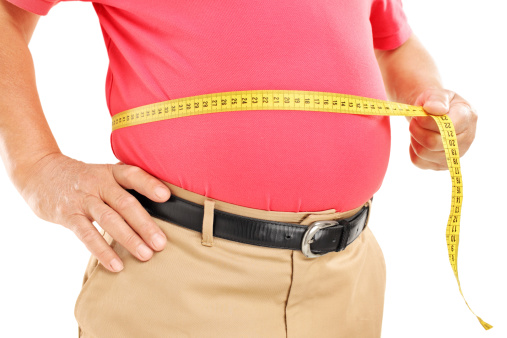Weight Loss – Simple Lessons for Sustained Success
Weight loss is a goal for many people today, but cutting
through all the hype and getting quality information can be
difficult. This article will give you information on your
metabolism, nutrition, and exercise that you can use to evaluate
weight loss programs that you may be considering, or to create
your own. For healthy, effective, and sustained weight loss you
need to be educated about how your body’s metabolism works.
Your Body Does Basic Math
One of the most important factors that directly impacts weight
loss is a concept called “energy balance.” Quite simply, this is
a measure of whether a person has eaten more calories than they
burned that day, or vice versa. Because of all the scientific
jargon, it can be baffling to read detailed descriptions of how
your body and metabolism work. But when it comes to weight loss,
all you need to know is that your metabolism does basic math –
addition and subtraction; calories eaten and calories burned.
- Neutral energy balance – eating the same number of
calories as you burn every day - Positive energy balance –
eating more calories than you burn every day - Negative
energy balance – eating fewer calories than you burn every
day -
In order to begin healthy, effective weight loss, you need to
achieve negative energy balance. There are two primary ways to
do this – daily diet and exercise. We’ll take a closer look at
each very shortly.However, it is important to note that most people who are aiming
for moderate weight loss should not tip the scales too
drastically into negative energy balance. For instance, if your
daily activities result in 2000 calories burned per day,
restricting your calorie intake to 800 calories per day would be
excessive. You would lose weight, but probably not in the way
you intended. Your body would see this drastic calorie
restriction as starvation, and would begin hoarding body fat and
burning muscle, in addition to losing valuable fluids and
electrolytes, which is exactly the opposite of what you are
hoping to achieve.If you are at neutral energy balance and have moderate weight
loss goals, then a calorie restriction of 500 calories per day
will produce healthy, gradual weight loss. Be sure to consult
your physician regarding appropriate levels of calorie
restriction and activity if your weight loss goals are very
aggressive.Nutrition
There are two main factors that you should consider when
evaluating your daily diet – total calories and composition. The
term “total calories” is as simple as it sounds – the number of
calories you have consumed in a given day. If you’re already
mindful of the total quantity of food you eat each day, and are
good at estimating serving sizes, you’re in a good position to
determine where your current energy balance is, and monitor it
as you progress. If not, it can be useful to purchase an
inexpensive kitchen scale to get a better idea of how big a
serving that you consider “average” really is. You need to know
how many calories you’re eating on a daily basis in order to
know where you can make improvements.The composition of your diet is also very important. With all
the competing diet programs out there, it can be difficult to
separate the science from the hype. The guidelines in the USDA’s
new food pyramid, called MyPyramid, are very helpful
in identifying good food choices – whole grain carbohydrates
instead of processed carbs (whole wheat bread rather than
white), lean instead of high-fat protein sources (chicken
instead of prime rib), and healthy sources of fat (olive oil
instead of Crisco). These guidelines will serve you well in
formulating a daily diet that will keep you well-nourished with
sustained energy levels and feeling your best over the long
term.Again, if working all the specifics out on your own seems
difficult, there are high-quality programs available that help
you specify meal composition, serving size, timing of meals and
snacks, and even provide you with a shopping list. These
programs can be helpful and convenient, but they are not
absolutely necessary to achieve your weight loss goals.Exercise
Exercise is a very important component of any well-balanced
weight loss program. In its Guidelines
for Healthy Aerobic Activity, the American College of Sports
Medicine recommends 30 to 45 minutes of moderate aerobic
activity performed 3 to 5 times per week. This can be as simple
as taking a brisk walk through your neighborhood.With this as a “base” of aerobic activity, weight training can
be an excellent way to burn more calories and encourage
development of lean muscle tissue, which burns additional
calories even when you’re sleeping! However, it’s important to
get qualified instruction in how to perform weight training in
order to ensure that you are performing the exercises correctly,
and not putting yourself at risk of injury.Another key element in the exercise equation is moderation. If
you haven’t worked out in a year, you should not set a goal of
running for an hour a day, five days a week. Begin moderately
and allow your body to become accustomed to this new routine.
When you’re used to walking briskly for 30 minutes three days
per week, consider increasing to four days per week, and so
forth.Regardless of what specific kind of exercise you choose, if you
perform it safely, moderately, and most
important, regularly, you will be in a much better
position to achieve your weight loss goals. Remember, the goal
is negative energy balance and exercise is another tool to get
you there. If your daily goal is a 500 calorie negative energy
balance, it can be much more pleasant to exercise 200 calories
away, and only have to restrict your diet by 300 calories.Conclusion
Successfully combining a healthy diet and exercise program is
the best way to achieve and sustain your weight-loss goals. A
pound of fat represents approximately 3500 stored calories.
Using the above example of a 500 calorie negative energy
balance, over the course of a week you would lose approximately
one pound, for a total of around 4 pounds per month. Experts
agree that this is a healthy rate of weight loss. More
importantly, by taking a gradual approach, you are teaching
yourself something far more important, which is behavior
modification.Crash diets may promise that you will lose five pounds a week,
but if you revert to the same patterns of behavior that you were
accustomed to before you started your diet, you’ll gain the
weight right back. No one becomes overweight overnight, so you
shouldn’t expect to lose the weight overnight either. Allow your
body to become accustomed to healthy new habits, so you can
sustain your success over the long term.Liz Smith writes about weight loss for
thedietchannel.com
-
Using Dietrine for Weight Loss
-
Controlling Obesity with Vitamin Supplements
-
Lose Weight – Tone Abs With Electronic Muscle Stimulator? Can Body Fat Melt Away?
-
The Need To Lose Weight – Potential Health Problems Which Can Affect People Who Are Overweight
-
The Ultimate Weight Loss Product Guide
-
Staying Healthy on a Low Carbohydrate Diet
- DON'T MISS
- Understanding The Metabolism
- Tracking the Elusive Calorie – Weight Loss Tips
- Can I Lose Weight Using an Elliptical Trainer?
- Lose Weight Permanently Without Dieting
- Preventing Overweight and Obesity – Are You Responsible Enough?
- A Weight Loss Secret – The Art of Detachment!
- Does Hoodia, the African Weight Loss Secret, Actually Work?
- Weight Loss: Why Doctors Recommend Phentermine Weight Loss Pills
- For a Safe weight loss try the Gen 1:29 diet (Part 1)
- Weight Loss Managment




